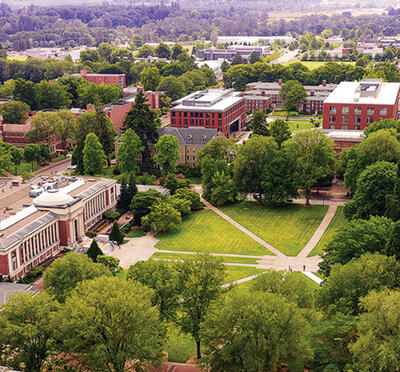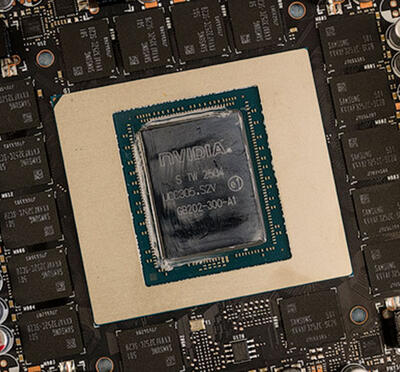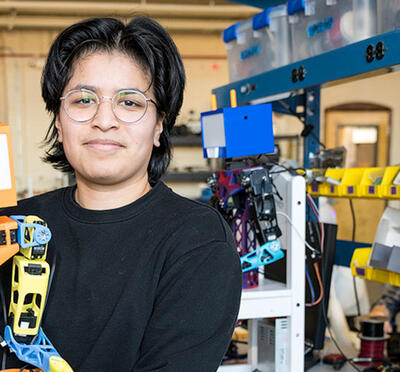When Kristen Travers went to see the 2017 film “Hidden Figures” her senior year of high school, she inadvertently found her career path.
“I was just so blown away and inspired by Katherine Johnson, Mary Jackson, and Dorothy Vaughn,” she said. “The math that Katherine Johnson was doing in the movie was the same math that I was learning in my calculus class at that time. I thought, ‘This is so cool. I have to study engineering.’”
Travers landed on mechanical engineering, drawn to its versatility, and began her time at Oregon State University with a broad set of interests and a willingness to try new things. Right away, she joined the Society of Women Engineers, where she joined a mentorship pod and went on a rafting trip with other members, even before her first class.
Over the course of her college career, which has included lab research experience and a series of summer internships, the fourth-year student has discovered a love of thermal fluid science and propulsion, adding a minor in aerospace engineering along the way.
While Travers has always wanted to work with rockets and airplanes, she didn’t always know what this would look like. At first, she wanted to make them more energy efficient before deciding what she really wanted to do was build them.
During her first year she participated in the URSA Engage program, working with Brian Fronk in his Thermal Energy Systems and Transport Lab. Although not quite working with rockets, Travers saw the fluid mechanics and heat transfer knowledge she gained as relevant to rocket propulsion systems.
Among her TEST Lab projects, Travers used a microchannel heat exchanger to inject food dye into model systems to study fluid distribution in solar thermal panels and to measure the corresponding impacts on the panels’ efficiency. She also designed novel heat sinks using a genetic algorithm developed by a previous graduate student.
This experience with thermal analysis ultimately led to multiple internships with Intel at its Hillsboro campus. For her first internship with the chipmaker in the summer of 2018, Travers analyzed the performance of thermal interface materials in computer processors.
“The goal of these materials is to fill the gaps between the heat spreader and heat sink with a material that has a higher thermal conductivity than the air that would fill the gap. This increases the heat transfer so that the processor can cool faster,” she said. “Processors are getting smaller and smaller, but more powerful, so they need an efficient way to dispose of the heat.”
During her summer 2019 internship with Intel, Travers expanded on her work with thermal management and electronics by assisting with the development of thermal models for a new memory card using computational fluid dynamics software.
In the summer of 2020, Travers finally got the chance to gain experience in the aerospace industry. “I decided that I would try and get a different internship because how would I ever know if I really loved aerospace engineering, if I never had any experience doing it?” she said.
Travers landed an internship at Boeing after interviewing with representatives of the company at the SWE annual conference in Anaheim, California, which hosts the world’s largest career fair for women in engineering. As president of the local SWE student chapter that year, Travers planned the conference trip for Oregon State’s members.
“The national conference was probably the highlight of this past year,” she said. “SWE has been a great way to meet other engineers, make friends, and get advice.”
At Boeing, Travers worked remotely as a systems engineering intern, helping the model-based engineering team develop complete models of plane production systems that allow engineers to identify and troubleshoot problems before production begins.
“I was in charge of going through the models to assess how mature they were,” she said. “It was nice to gain a more holistic view of how everything functions together.”
Now back at Oregon State, Travers is finishing up her honors thesis. Working again with Fronk, she’s studying supercritical carbon dioxide as a liquid coolant for electronics cooling at high heat fluxes. “Supercritical carbon dioxide can potentially achieve the advantages of high heat transfer from two-phase coolants with the simplicity of a single-phase coolant,” she explained. “It yields lower heat sink temperatures with less energy consumption.”
As she reflects back on the past three years, Travers says, “I’ve learned it's okay to feel overwhelmed at first because as you work through it, there are people that are going to be able to help you. And you get bits of knowledge as you go through it and it starts to make more sense.”
Access to a variety of research projects and internships has been a great way for her to figure out what comes next. “I definitely think getting the hands-on experience in the TEST lab right away really helped,” she said. “The research led me to propulsion, which is my current main interest. I'd really like to work on airplane or rocket propulsion in the future.”
Travers will get the opportunity to do just that after she graduates; she’s recently accepted a position with Boeing as a systems engineer. While she’s looking forward to it, she’s still interested in pursuing a graduate degree sometime in the future.
No matter where her path leads, the sky’s the limit.




